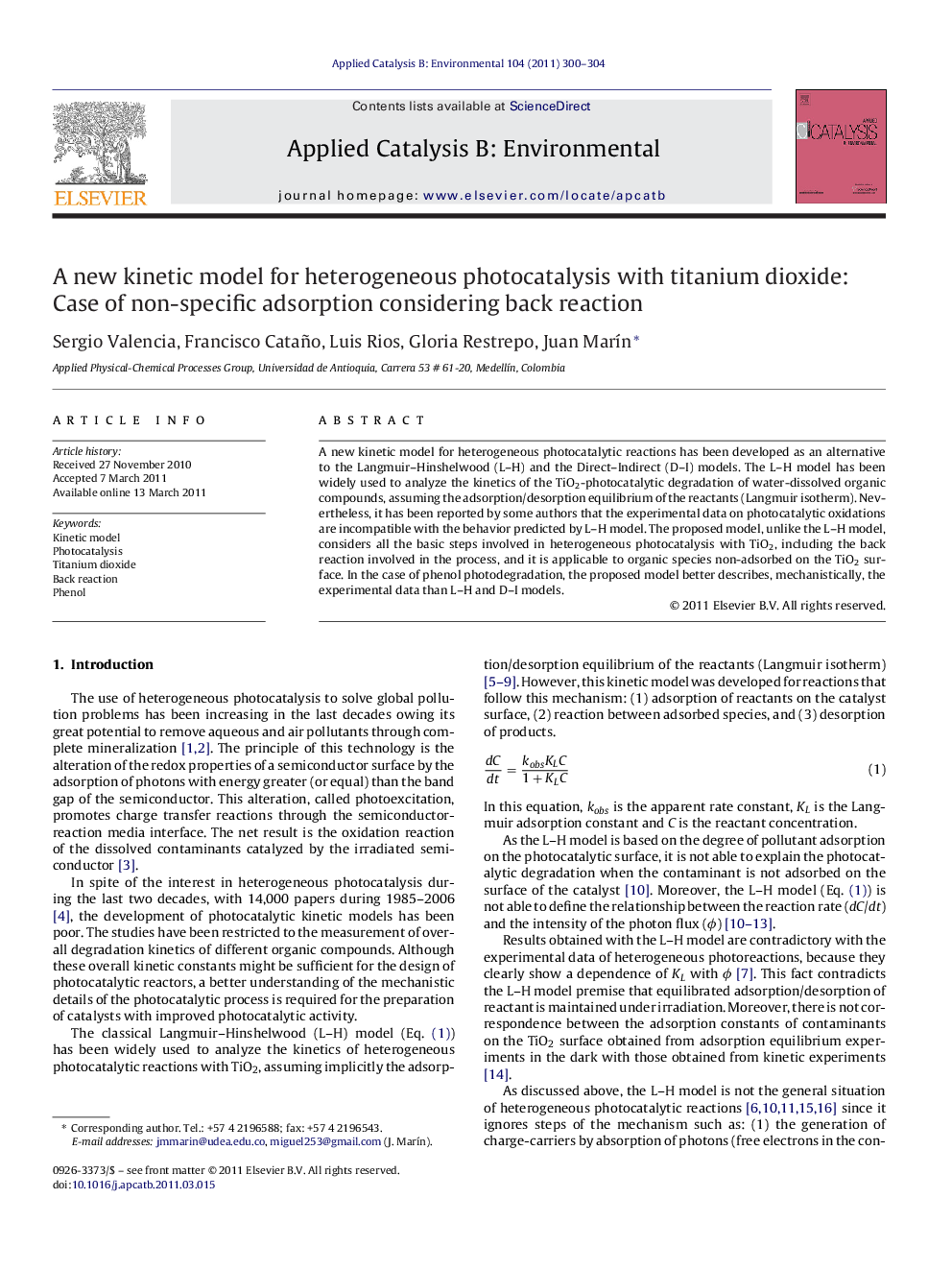| Article ID | Journal | Published Year | Pages | File Type |
|---|---|---|---|---|
| 46967 | Applied Catalysis B: Environmental | 2011 | 5 Pages |
A new kinetic model for heterogeneous photocatalytic reactions has been developed as an alternative to the Langmuir–Hinshelwood (L–H) and the Direct–Indirect (D–I) models. The L–H model has been widely used to analyze the kinetics of the TiO2-photocatalytic degradation of water-dissolved organic compounds, assuming the adsorption/desorption equilibrium of the reactants (Langmuir isotherm). Nevertheless, it has been reported by some authors that the experimental data on photocatalytic oxidations are incompatible with the behavior predicted by L–H model. The proposed model, unlike the L–H model, considers all the basic steps involved in heterogeneous photocatalysis with TiO2, including the back reaction involved in the process, and it is applicable to organic species non-adsorbed on the TiO2 surface. In the case of phenol photodegradation, the proposed model better describes, mechanistically, the experimental data than L–H and D–I models.
Graphical abstractFigure optionsDownload full-size imageDownload as PowerPoint slideHighlights► The Langmuir–Hinshelwood model cannot fit experimental phenol photo degradation data. ► The “Direct–Indirect” model predicts higher values of the phenol degradation rates. ► The new model predicts the back reaction present in the phenol photo degradation.
